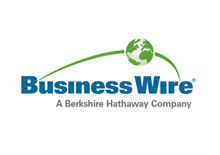Global Resorcinol Market: Industry Trends, Share, Size, Growth & Opportunities - ResearchAndMarkets.com
The "Resorcinol Market: Global Industry Trends, Share, Size, Growth, Opportunity and Forecast 2020-2025" report has been added to ResearchAndMarkets.com's offering.
The global resorcinol market is expected to grow at a CAGR of nearly 4% during 2020-2025. Resorcinol, or resorcin, is a crystalline solid that is white in color and soluble in alcohol, ether and water. It has a slightly bittersweet taste and is produced by melting resins, such as asafetida and galbanum with potassium hydroxide (KOH) or by the distillation of brazilwood extract. This organic compound enhances the adhesive strength of rubber and wood products and is used in the manufacturing of fire retardants, dyes, UV stabilizers, explosives and herbicides. Owing to this, it finds extensive application across various industries, including rubber, chemical, automotive, construction, etc.
The growing automotive industry, along with the increasing usage of wood in the construction of residential and commercial complexes across the globe, is among the key factors driving the growth of the market. Resorcinol is widely used as a wood-binding agent, owing to its high cost-effectiveness, chemical stability, resistance to solvents, salt-water, acids, and oil. It also finds applications in the manufacturing of light screening agents to protect plastic products against ultraviolet (UV) rays. Furthermore, with the growth of the automotive sector, there is an emerging need for various rubber-based products, including belts, tires and rubber-coated fabrics. This is acting as another growth-inducing factor as these products utilize resorcinol as a binding medium for rubber and reinforcing cords. Additionally, increasing utilization of the compound in the production of non-halogenated flame-retardants and various agricultural chemicals is also providing a boost to the market growth. Moreover, the increasing prevalence of skin-related medical ailments is increasing the utilization of resorcinol as an antiseptic and disinfectant in skincare products for the treatment of acne, psoriasis, eczema, calluses, and warts.
This latest report provides a deep insight into the global resorcinol market covering all its essential aspects. This ranges from macro overview of the market to micro details of the industry performance, recent trends, key market drivers and challenges, SWOT analysis, Porter's five forces analysis, value chain analysis, etc. This report is a must-read for industry players, investors, researchers, consultants, business strategists, and all those who have any kind of stake or are planning to foray into the resorcinol market in any manner.
Key Questions Answered in This Report:
- How has the global resorcinol market performed so far and how will it perform in the coming years?
- What are the key regional markets in the global resorcinol industry?
- What is the breakup of the market based on the application?
- What is the breakup of the market based on the production method?
- What is the breakup of the market based on the end-use industry?
- What are the various stages in the value chain of the global resorcinol industry?
- What are the key driving factors and challenges in the global resorcinol industry?
- What is the structure of the global resorcinol industry and who are the key players?
- What is the degree of competition in the global resorcinol industry?
Key Topics Covered:
1 Preface
2 Scope and Methodology
2.1 Objectives of the Study
2.2 Stakeholders
2.3 Data Sources
2.3.1 Primary Sources
2.3.2 Secondary Sources
2.4 Market Estimation
2.4.1 Bottom-Up Approach
2.4.2 Top-Down Approach
2.5 Forecasting Methodology
3 Executive Summary
4 Introduction
4.1 Overview
4.2 Key Industry Trends
5 Global Resorcinol Market
5.1 Market Overview
5.2 Market Performance
5.3 Market Forecast
6 Market Breakup by Application
6.1 Tire and Rubber Products
6.2 Wood Adhesives and Binders
6.3 UV Products and Dyes
6.4 Flame Retardants
6.5 Others
7 Market Breakup by Production Method
7.1 Benzene Disulfonation
7.2 Hydroperoxidation of Meta-Diisopropylbenzene
7.3 Hydrolysis of Meta-Phenylenediamine
8 Market Breakup by End-Use Industry
8.1 Automotive
8.1.1 Market Trends
8.1.2 Market Forecast
8.2 Building and Construction
8.3 Healthcare
8.4 Electrical and Electronics
8.5 Others
9 Market Breakup by Region
9.1 Asia Pacific
9.1.1 China
9.1.2 Japan
9.1.3 India
9.1.4 South Korea
9.1.5 Australia
9.1.6 Indonesia
9.1.7 Others
9.2 Europe
9.2.1 Germany
9.2.2 France
9.2.3 United Kingdom
9.2.4 Italy
9.2.5 Spain
9.2.6 Russia
9.2.7 Others
9.3 North America
9.3.1 United States
9.3.2 Canada
9.4 Middle East and Africa
9.4.1 Turkey
9.4.2 Saudi Arabia
9.4.3 Iran
9.4.4 United Arab Emirates
9.4.5 Others
9.5 Latin America
9.5.1 Brazil
9.5.2 Mexico
9.5.3 Argentina
9.5.4 Columbia
9.5.5 Others
10 SWOT Analysis
10.1 Overview
10.2 Strengths
10.3 Weaknesses
10.4 Opportunities
10.5 Threats
11 Value Chain Analysis
12 Porters Five Forces Analysis
12.1 Overview
12.2 Bargaining Power of Buyers
12.3 Bargaining Power of Suppliers
12.4 Degree of Competition
12.5 Threat of New Entrants
12.6 Threat of Substitutes
13 Price Analysis
14 Competitive Landscape
14.1 Market Structure
14.2 Key Players
14.3 Profiles of Key Players
14.3.1 Akrochem Corporation
14.3.2 Aldon Corporation
14.3.3 Alfa Aesar
14.3.4 Amino-Chem Co. Ltd.
14.3.5 Atul Ltd.
14.3.6 Dynea AS
14.3.7 Euram Chemicals Ltd
14.3.8 Indspec Chemical Corporation
14.3.9 Jiangsu Zhongdan Group Co., Ltd.
14.3.10 Kraeber & Co. GmbH
14.3.11 Mitsui Chemicals
14.3.12 Napp Technologies
14.3.13 Sigma-Aldrich
14.3.14 Sumitomo Chemicals Co. Ltd.
For more information about this report visit https://www.researchandmarkets.com/r/lb3wyr
View source version on businesswire.com: https://www.businesswire.com/news/home/20200518005322/en/




